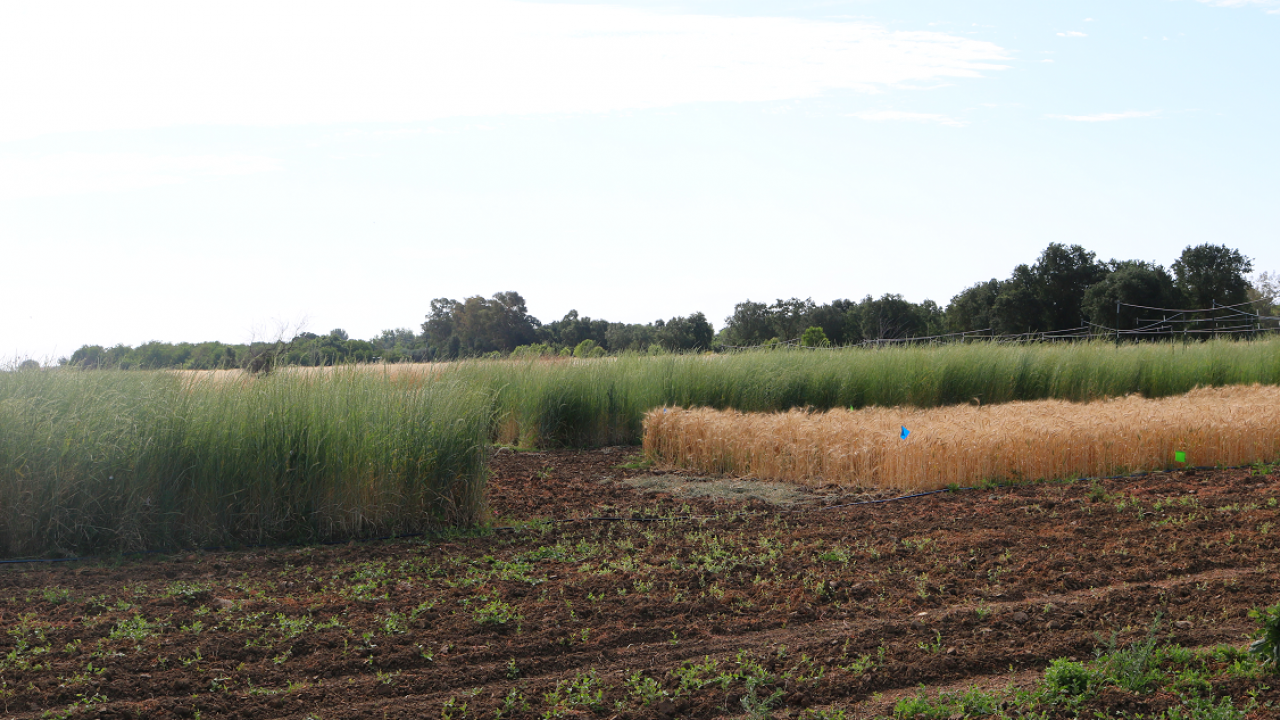
Small Grain Growers Have Seasonal Harvest Options (Mark Lundy Research)
Flexible harvest options might give growers an opportunity to plant small grains in the winter, rather than fallow ground, out of concern that there will not be adequate water or strong enough markets to justify the crop.
Winter cereals have the advantages of serving both milling and forage markets at different stages, and of being amenable to termination any time from early in the year as a cover crop to improve water infiltration to late June.
“You can plant a small grain in the fall and see about the water and the markets before you decide how to manage and harvest it,” said Mark Lundy, faculty member in Plant Sciences at UC Davis, and UC Cooperative Extension small grains specialist. “Winter cereals have multiple uses or markets and flexible growth habits that permit them to be managed reactively depending on the season.”
Lundy made his remarks as he discussed strategies for growing winter cereals in the face of uncertainty over markets and water with the growers and researchers who came to UC Davis’ Russell Ranch for the annual sustainable agriculture field day.
The key to maintaining the viability of wheat, oats, barley and other winter grains is that they are so flexible that you can delay a decision about when to harvest until after you know more about water availability and how the markets will shape up.
“A boot stage harvest has low biomass, but gives you very high quality forage,” Lundy said. “It gives you a very good economic return on the water. You can also harvest at the soft dough stage for forage.”
With harvest at this stage in March, the crop only uses between four and nine inches of water and the return is between $52 and $90 an inch; while soft dough harvest in early to mid-May produces more tons of forage but uses seven to 16 inches of water at a return of $30 to $55 an inch.
In better rain years, the crop uses 15 to 32 inches with a dual purpose harvest in late-June for both grain and forage and the return is $22 to $32 an inch, while mid- to late June for just the grain is trending down, and one reason might be the crop needs 11 to 22 inches of water and the return is $11 to $22 an inch.
Even in very dry years and poor forage markets, planting a small grain while controlling weeds in November may pay off in improved soil quality.
“You can start a small grain in the fall and not harvest it for any market,” Lundy said. “You can terminate it early like a cover crop, and you get 70 percent more water storage in the ground than if you left it fallow.”
With this strategy of tillering termination in mid-January to mid-February, the crop only uses an inch to six inches of water.
The beauty of growing the small winter grains is that you do not have to decide when to harvest the crop, and where to sell it, until you are far enough into the season to know quite a bit about how much rain there will be and the going price for grain and forage, he said.
“Early-season forage harvests guarantee a return with the possibility of regrowth for a second harvest depending on water availability,” Lundy said. “Even early-season crop termination may be a net water benefit over leaving the land fallow because of the increased infiltration. Increased selection for early-season growth and vigor and multiple uses or harvests could broaden the potential for small grain acres.”

Many growers in areas where other crops are not an option are already taking advantage of the flexibility of small grains.
“In Oklahoma, they take a forage harvest early and then play it by ear,” Lundy said. “They can grow it to grain, or to another forage harvest. If you approach the season with a flexible mindset we can grow these markets. The total return depends on the changing prices for forage and grain.”
In California, however, a combination of water uncertainty, market instability and the alternative of higher value permanent crops has led to a precipitous drop in the winter cereals.
“The acreage of small grain crops is at about its lowest in the history of the state,” Lundy said. “We’ve had an increase in winter-fallowed land acreage over the last five to 10 years because of concerns about water and markets.”
Small grain planting statewide has plummeted to just 400,000 acres, down from a million acres a decade ago and as much as 12 million acres in the 1920s.
Some of this decline is because growers have planted more lucrative permanent tree and vine crops, but there is also more ground that could be put to use rather than being left fallow in the winter between plantings of tomatoes or other crops.
“There is some low hanging fruit because growers have not seen small grains as a big part of their business,” Lundy said.
